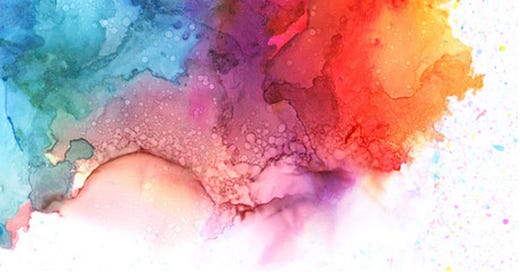Why we need a robust definition of culture
And why “cultural fit” is the wrong criteria for refugees… and friends
Global politics these days sure offers a lot of teachable moments for social science professors. I could begin almost anywhere. But since I’ve lived and researched in both America and South Africa, I decided to weigh in on the latest situation that ties these two together: Afrikaner refugees arriving in the United States.
And yes, I want to take this as a teachable moment for all of us right now. You and I probably aren’t deciding who gets invited into this country as refugees, but we are deciding who gets included in our workplaces, neighborhoods, faith communities, and friend groups. And here’s the lesson for us all: cultural fit is the wrong standard to use.
As basic background, the Trump administration has decided to close off nearly all refugees while newly welcoming South African Afrikaners, people of Dutch descent who make up about 4% of the South African population. A lot of the rhetoric defending Afrikaners as “better” immigrants than other potential groups is focusing on cultural fit. Here’s what Brianna Lyman wrote in The Federalist:
“A handful of English-speaking farmers who share many of America’s civic and cultural values presents far less strain on communities than the resettlement of thousands of individuals from vastly different societies, such as Haiti … America is not an abstract ideological project, but a real country with a culture, a history, and a people. From this perspective, refugee policy must be guided not just by humanitarian instinct, but by national cohesion and cultural compatibility. … A refugee policy that aligns with our founding values and shared cultural identity does not oppose diversity — it merely insists on compatibility with a goal not of racial homogeneity, but of cultural integrity.”
Ok, so there’s a lot to address here. But first let me say that I’m not interested in calling anyone racist today. I was struck by something I read from political commentator Isaac Paul in his independent, non-partisan newsletter, Tangle. It’s worth reading his take on what the left, right, and South Africans are saying about the Afrikaner refugee story. In it he says this:
“Politically, describing policies as emblematically racist or white supremacist is an exhausted tactic, and doesn’t just reach very few people outside the most devoted liberals, but turns a lot of people off.”
He’s not wrong. One classic study found that when people feel insulted in a conversation, odds are more than three-to-one that they will become more extreme in their original position.* Very little good comes of conversations that go, “You’re a racist,” “No I’m not—you are.”
So let’s talk about what culture is and is not, and why false definitions of culture matter.
First, culture does not equal nationality.
Brianna Lyman is right that America is a “real country,” but not that it has “a culture.” America, like all nations, is filled with people who can differ widely in culture.
She’s using what I think of as the color-matching approach to culture. This approach imagines nations as entirely separate entities, with people in those nations all neatly matching each other culturally. Within some nations, there might be a few folks who happen to have an ethnicity that doesn’t match a nation, like say Kurds, Karenni, or Afrikaners. The model looks like this:
In the color-matching model of culture, refugee resettlement is about taking people who don’t match their surrounding nation’s culture and relocating them to another setting where they’ll be a closer match. Who should be included in nation A? Clearly the people of Ethnicity C, not nation B or D, because light pink will “blend in” better than blue or green. Having a color that sticks out would be a bad thing, since everybody else in the country matches.
See the problem? Nations are not cultures. Nations are political entities with geographic borders that were designed, not inherent. The people within those boundaries do not stay put, nor do their ideas or even the boundaries themselves.
Think for example of the 1848 Treaty of Guadalupe Hidalgo that moved the U.S. border South, making more than 100,000 formerly Mexican people into Americans, or the 1884 Berlin Conference that set a precedent of European nations carving out national borders across Africa regardless of ethnic homelands. When residents found themselves in a new nation did their culture change overnight? Nope.
Anthropologists think a lot about the damage this color-matching approach does because anthropologists were some of the first and worst offenders. Early anthropologists of the 1800s traveled the world trying to describe groups they presumed to be homogeneous and predictable, like “the Zuni” or “the Zulu.” At their worst, these early anthropologists created zoo-like exhibits displaying live human beings intended to represent prototypes of these cultural categories.
Ok, so culture does not mean nation. But surely culture and ethnicity are basically the same, right? Nope again.
Culture does not equal ethnicity.
Even within an ethnic group, people aren’t all the same culturally. Ethnicity is a word to describe people who identify as members of a common group. The commonalities that matter to an ethnicity can be almost anything, as long as that group believes it to be significant: birthplace, religion, language, political event, migration, familial lineage, or more.
Culture, on the other hand, includes all the ways of being that we share with other people, including anything from enjoying Ted Lasso to growing long fingernails. People who share an ethnicity might culturally share a lot or a little in common. Take for example a Korean-born grandmother, her son who emigrated to the America as a young adult, and her American-born granddaughter. They might all identify as ethnically Korean, but their ways of interacting with the world might radically differ.
In other words, you can’t assume all Afrikaner people think and act the same any more than you can assume all Americans do.
Which brings us to another problem with that color-matching approach to culture.
Culture is not homogeneous.
I filled in each of the shapes above by clicking a single icon. Every pixel is the same. Instead we need to imagine culture like smeared watercolor paint on wet paper. There are no dark lines outlining the borders of a cultural group, and no single person in a cultural setting perfectly matches another.
Yes, there are cultural patterns, and those patterns make a difference. If you step from the blue zone to the purple zone, you’ll know something changed. But you won’t be able to find a precise spot where the change occurs, and every person you meet in the purple zone will be uniquely influenced by the oranges, greens, and other shades surrounding them.
In other words, however much Lyman might want “national cohesion and cultural compatibility,” she needs to ask, with which Americans? (Presumably what she means is with people ideologically similar to herself.)
But let’s take that watercolor image one dimension further. What happens as time passes?
Culture is not static.
Culture is not just ink dried on a page, it’s a constant state of flow, like ink dropping into water.
Cultural forms are always growing or receding, shifting and emerging. They leak where you don’t expect. They blend into hybrids. You and all the people around you are culturally adapting from birth to death.
For example, nearly every food you eat is influenced by some cultural setting that does not match your own. I ate corn in my cereal that was indigenous to this continent but not my ancestors, wheat first grown in the middle east, and milk from cows first domesticated in what is now Pakistan. Cultural forms refuse to stay put.
That means when you bring an immigrant into a new group, that person can and will change. So will the people around them. Cultural adaptation—whether for immigrants or for your move to a new house—is not all “strain,” as Lyman put it. It’s normal human behavior.
Culture is often invisible
If you’re not from South Africa, you might assume that all White South Africans share the same culture. But South Africans will be quick to tell you otherwise. English and Dutch (Afrikaner) people in South Africa have a long history including war and political tension as well as unity. Many people in these groups celebrate their ethnic, linguistic, and cultural distinctiveness. But to an outsider, those distinctions can be subtle.
When I lived in South Africa, for a while my kids went to a preschool run by an Afrikaner woman. In many ways it looked like a cultural fit for us—she spoke English, surrounded kids with American toys, and watched Barney on television. But my children were not happy there. I watched her interact with them, and it was hard to put my finger on what made them uncomfortable, but I think it came down to subtle cultural differences. The ways she spoke and responded to children were just different enough to put them on edge.
Ok, so my kids didn’t like the Afrikaner preschool. Does that mean we weren’t a “fit” for that community? Not at all. And here’s my last point…
Cultural difference does not prevent unity.
We made some of our closest friends ever in South Africa. Those friends include people who are ethnically Afrikaner, English, Zulu, and Sotho. Were we “culturally compatible?” In some ways, sure. Often we connected over commonalities like raising kids, work, music, valuing social justice, faith, or a sense of humor. Other times our cultures were vastly different.
If there was one single factor that bonded each one of those friendships it was this: a willingness to connect. It’s that simple. We chose to connect, so we did. Sometimes those connections were built not just despite differences, but even because of differences—we got along because we could laugh as we traded our American stories of trapping possums for their stories of hunting kudu, teaching each other to cook tortillas and phuthu, laughing at each other’s funny ways of pronouncing the same words.
So here’s the deal. If you find yourself asking who’s a “good fit” for a group—say, in a hiring process or deciding who to have over for dinner—please don’t take the cultural color-match approach. Culture is not bounded, not fixed, not nation-based, and not insurmountable. Try using the question instead, “who’s a cultural add to this group?”
We can do better.
This article is part of series on proven, effective ways to pursue justice for the long haul. We’re going to need perseverance, strategy, accomplices, humility, tears, and a lot of other things. That’s why I decided to call this series “What we still need.” Read more posts in this series here.
*From a Journal of Experimental Social Psychology 1967 study, which I found quoted by Cherie Harder in Habits of Hope, who quotes it from Arthur Brooks’ Love Your Enemies.






